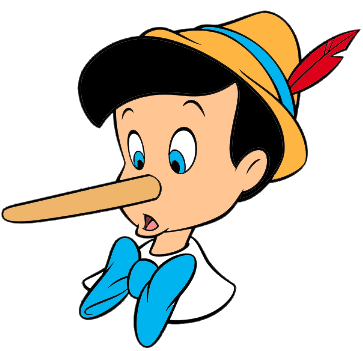You’ve been thinking about getting organized and decluttered for weeks, months, years. You just can’t seem to get started, motivated or going. What’s holding you back?
Decluttering and organizing are not unlike other forms of self-care such as eating healthier, getting in shape or reducing your stress. Accomplishing these takes a plan, consistent action and focus.
It can be as simple as setting a goal, breaking that goal into small parts and making sure you have what you need to obtain and meet your goal. Just like walking – taking one step and then another – you are seemingly doing the same thing over and over but the scenery changes as you go.
As you make progress, you will notice other types of change in your body, your brain and your mood. All these changes work on each other to improve your actual, as well as perceived, sense of wellbeing. The same is true for organizing.
The beginning of the year is a great time to resolve to get organized. Even if you are feeling motivated, your chances of success will depend on having a simple, actionable plan. This will help you overcome distractions and reasons to do something else.
Make a Plan
People sometimes hear the word plan and they give up before they start. Planning is nothing more than visualizing yourself doing the task and considering what you would need to be successful.
In the case of organizing, think about what you will need to get the job done.
- Imagine yourself doing the task. Break it into small steps. What will you have to do to tidy or organize your desk, freezer, coat closet, tool area? Will you empty everything first? Do you have enough counter space? How will you sort items? Do you plan to donate or recycle or dispose of items you don’t want? Do you need a sitter for your kids? Take a few moments to think it through.
- Consider what you’ll need to support you in the task. Just like it’s a good idea to have comfortable, supportive walking shoes when you go for a brisk walk outdoors, as you get organized, you will need things to support your process. This could be things like bags for donations or trash, a dust rag for wiping off surfaces, a clear surface for sorting items, even music if you think that will keep you motivated and energized. Get those things together before you start organizing. Once you gather your supplies once or twice, it will be second nature the next time you embark on a new organizing task.
Take Action
Gathering your supplies is a form of taking action. Clearing a surface for sorting is also a form of taking action. Even getting your music set up is an action. The secret to success is taking small, achievable consistent action every time you embark on an organizing project.
- Aim for action, not perfection. As the saying goes, perfection is the enemy of progress. This is especially true for physical organizing. Does the surface need to be perfectly clear? No. Do you need to have pretty bins, brand-new containers and chalk board labels? Absolutely not! Most of all, don’t compare yourself with others. Turn off the critic and know that good enough IS good enough.
- Treat organizing as a practice not a one-time event. A practice is a series of behaviors that you do over and over with consistency. This will help build what I call the decision-making muscles in your brain. Each time you make a decision about whether or not you want to keep something you own, your decision-making muscles will get stronger.
- See yourself as more organized. Getting organized is an action consisting of similar tasks. The more you do the more you’ll develop an “organized” mindset. You’ll start to see yourself as an organized person. That mindset will further propel you to change your behavior. For example, you may think twice the next time you shop or consider bringing something new into your home.
Stay Focused
For many this can be the most difficult part of embarking on an organizing project. You have a plan but once the reality of sorting items, making decision after decision and physically moving or transporting items, you will lose focus, get bored and maybe want to give up. Don’t!
Just like walking – taking one step and then another – you are seemingly doing the same thing over and over. But what you are also doing is creating other types of change you might not notice right away in your body, your brain and your mood. All these changes work on each other to improve your actual, as well as perceived, sense of wellbeing. The same is true for organizing.
When you focus on the tasks of physical organizing and decluttering, there are some very real ways you are enhancing your body and mind’s wellbeing.
- Improve brain health. Researchers believe the brain’s prefrontal cortex holds the neurons that allow us to sort and categorize. It’s actually a very sophisticated brain process involving assigning categories based on our experience. The act of organizing improves our brain’s health by exercising those parts of our brain needed to accomplish the task of getting organized.
- Gain self-awareness. Accept that some areas will be easier for you to declutter than others because of negative associations. If you notice you continually avoid or start and stop an organizing task, ask yourself if there is something about the objects themselves that have a negative connotation. Recognize and accept the association but don’t let it stop you.
- Enhance wellbeing. The very act of sorting alone can be a kind of meditation. As you sort, you will notice your mind going in many directions. As you focus, you will become more relaxed and the task of sorting and purging becomes easier. Not only that but the focused actions you take will release the neurochemicals in your brain, called endorphins, that make you feel good.
- Sustain motivation. I always ask my clients to imagine the space they want decluttered as already organized. Then I ask them to tell me 1) How it makes them feel and 2) What they can now do differently in the space that they couldn’t do before. Being able to imagine the result is a common strategy used by athletes to keep them focused. Keeping your imagined result, top-of-mind, can be a great way to stay motivated and focused.
Unique Challenges
For those with cognitive impairments caused by traumatic brain injury, stroke or age-related dementia, you may have a more difficult time with organizing. These conditions often impact your ability to process the information needed to organize your physical surroundings. With support and professional guidance these obstacles can be overcome or diminished.
Organizing physical items in your home – by sorting, editing and assigning where they live – is a form of self-care that improves your body, brain and mood. It may feel difficult, painful or even boring at first but with a plan, consistent action and focus, you will likely feel good, less stressed and happier.
Lis McKinley, M.A., is a certified professional organizer, move manager and owner of LET’S MAKE ROOM, LLC based in Oakland, Ca.










